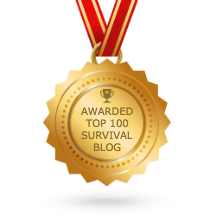All processed factory-packaged foods are dated. Unfortunately, most of the time the date is in a code that is of no help to the consumer. These dates are used by the manufacturer and grocery store manager in a product recall and is required of all items packaged in the same place, on the same date.
The federal government requires product dating only on poultry, infant formula and some baby foods. Depending on your state regulations, some perishable foods have to have an "open date" that consumers can understand when choosing a product to be sure its fresh. For many other foods, dates are put on products voluntarily by manufacturers to ensure consumers get a "fresh" product.
If you know what those dates mean, you can know whether or not you want to purchase an item and also how long you have to use it. Here are some of the common terms and what they mean:
Packed on - This means the date the food was placed in package. If you are looking at fruit, this date will not tell when the fruit was picked, only the day it was placed in the package. So, this only helpful if you know how long that food stays fresh.
Sell by - This is the last date on which a store should sell a product to you. Another term for this is "pull date." You can usually find a "sell by" date on bread and bread products, dairy products, cold cuts and fresh fruit juices. Bakery products are commonly sold a day or so after their sell by date but for a lower price. Most foods that have gone past their "sell by" dates you can still use safely.
Milk - can be used for about a week after the "sell by" date.
Raw fish, meat and poultry - If you are not going to use by the "sell by" date you can freeze it.
Fruit juices, coffee, tea, nuts, dried fruit and fresh cranberries - If you are not going to use by the "sell by" date you can freeze them. I make it a practice of keeping my coffee, tea and nuts in the freezer to ensure optimum freshness.
Best if used by (Use by) - By this date, you should use the product if you want maximum taste. You may still consume the product after this date, it just might not have as much flavor.
Expiration date (Exp) - Expiration dates usually appear on yeast and baby formula and sometimes on milk. After the expiration date, most foods should not be used. Apparently, eggs are the exception. Eggs that are federally graded must have expiration dates not later than 30 days from the time they are put in the carton. Stores can't sells the eggs after this date, but you can use the eggs safely for the next month or so assuming you refrigerate your eggs properly.
High acid canned foods (ex. tomatoes) should be used within !8 months of purchase. You risk the chance of them exploding when you open them if you keep them too long.
Low acid canned foods - Fish, meat, most vegetable and fruits will keep in the pantry for two to five years.
For more helpful information about Shelf Life Ingredients visit us at Fasthowto.com
Simple: Just Add Water - Outdoor Gourmet Meals - WiseFoodStorage.com







0 comments:
Post a Comment